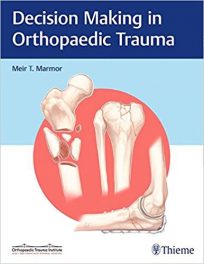 Author: Walter Willett
Author: Walter Willett
Publisher: Oxford University Press
Book Review by: Nano Khilnani
How does the diet of people affect the incidence of highly prevalent ailments such cancer, diabetes, and heart disease? How do eating habits in given populations correlate with or cause other chronic diseases?
This path-breaking book by Walter Willett documents such critical relationships between diet and disease. Beyond that, this book is a guide for students and scientists to develop and conduct studies that would examine those relationships and provide critical data showing cause-and-effect evidence between certain types of diets and certain diseases.
In a review of this book in the International Journal of Epidemiology, it is stated that it “covers, with unusual clarity, complex issues related to the nature of variation in diet and its implications in the design and interpretation of studies in nutritional epidemiology.”
In the Journal of Nutrition Education, this book is described as being “very valuable
to the growing group of researchers and graduate students wanting to understand the relationship between diet and the incidence of chronic disease among Americans….Willett’s book will be most useful to advanced students, practitioners, and researchers.”
This book of 20 chapters is aimed to accomplish the following goals
1. Provide an overview of nutritional epidemiology; address various perspectives from which diet can be viewed and discuss the calculation of nutrient intakes from data on food consumption (chapters 1 and 2).
2. Provide a conceptual background regarding sources of variation in diet for the novice to this field and assembles data on dietary variation of use to the serious investigator; and reviews strengths, variations, limitations, and short-term recalls and dietary records as methods for measuring intake (chapters 3 and 4)
3. Discuss the assessment of diet in children and application of new technologies in nutritional epidemiology; and examine the design and evaluation of questionnaires used in this field (chapters 5 and 6).
4. Discuss the relationship of diet and disease from the remote past; the use of spouse surrogates in case-control studies; and the use of biochemical indicators (chapters 7 and 8)
5. Address the use of measures of body size and composition; and assess physical activity in epidemiological studies (chapters 9 and 10)
6. Probe issues in the analysis, interpretation, and presentation of epidemiological data, such as on total energy intake, measurement errors, and dietary pattern analysis (chapters 11, 12, and 13).
7. Deal with the integration of contemporary genetics and nutritional epidemiology (chapter 14)
8. Address substantive applications of nutritional epidemiology such as nutritional surveillance, vitamin A and lung cancer, dietary fat and breast cancer, diet and heart disease, folic acid and neural tube defects (chapters 15 to 20)
Throughout its 20 chapters, Dr. Willett provides ample evidence of relationships between diet and disease, in the form of charts, figures, mathematical formulas, notes, tables, and other visual presentations.
This is a vital book in the study of diet and disease – not only on the “how-to” for students but also on the “what was found” from actual studies. We congratulate him on his important work in nutritional epidemiology.
Walter Willett, MD, DrPH, is the State Professor of Epidemiology and Nutrition and Chair of the Department of Nutrition at the Harvard School of Public Health. He is also Professor Medicine at Harvard Medical School. He has developed three large prospective investigations of diet and health within the Nurses’ Health Study, Nurses’ Health Study II, and the Health Professional’s Follow-up Study, which together include over 250,000 men and women.







